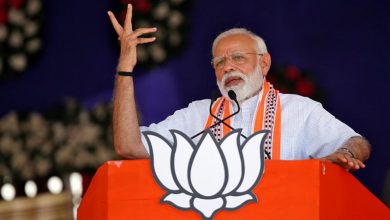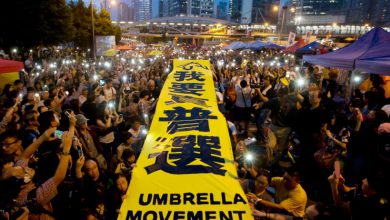AllAsia and OceaniaResolved
Who Was Indira Gandhi? Women in History
Indira Gandhi being one of the longest serving prime Minister began her political career on a firm footing, sadly it never ended the same the same way.
Indira Gandhi is notably the first and till date the only female Prime Minister in the history of India. Indira Gandhi is the daughter of Jawaharlal Nehru, the first prime Minister of India.
Indira Gandhi was born Indira Priyadarshini Nehru on the November 19th, 1917 in Allahabad in the United province of Agra and Oudh, (present day Uttar Pradesh, India). Her father, Jawaharlal Nehru, was a leading figure in the struggle against Britain for the independence of India and emerged as the first and longest serving Prime Minister of India after the country gained its independence in 1947.
Indira as a child found herself often very lonely. Her father was often away, organizing politically rally and campaign. While her mother, whom she grew up with was often sick and bedridden. Her mother later died of tuberculosis.
Indira Gandhi was mostly homeschooled and intermittently went to several middle schools before her matriculation in 1934. Due to her mother’s failing health, Indira had to travel to Europe to attend to her and in the course, it was decided that she would continue her schooling in the University Of Oxford. She never did complete her study in the University of Oxford. She was however, conferred with an Honorary Degree Of Doctor at the University of the South Pacific in Fiji in 1981.
During her stay in Europe, Indira frequently had contact with Feroze Gandhi (no relation to Mahatma Gandhi), an Indian student studying at the London School Of Economics, who will later become her husband. They got married in Allahabad (hers as well as her husband’s hometown).
Indira Gandhi’s political career started more as a regular job than as an outright venture into politics. Upon her return from England, Indira began working with her father (the then Prime Minister) as his unofficial personal assistant.
Five years later, she joined the working committee of the Congress Party and in the space of four years (in 1959) she would rise to become the president of the Congress Party. In 1958, while on an official state visit in Bhutan with her father, Indira husband, Feroze Gandhi developed a severe heart attack. Indira had to return home to take care of him. Sadly, her husband had a second attack again and died in 1960 in New Delhi.
In 1964, four years after the death of her husband, Indira father, the then Prime Minister also passed away and was succeeded by Lal Bahadur Shastri. The new Prime Minister appointed Indira as the minister of information and broadcasting. Prime Minister Shastri died unexpectedly in 1966.
Indira was named as the new Prime Minister as a compromise candidate as the Congress Party was dividing and both side thought Indira would be weak and easy to control. However, turns out they both gambled wrongly.
As the Prime Minister of India, Indira made some very popular decisions which she is still remembered for in modern day India. After the successful testing of the Chinese nuclear weapon in 1967, Indira also authorized the development of a nuclear weapon program in India. Also in order to counterbalance the growing mutual relationship between Pakistan and the United States, Indira began working on developing a mutual relationship with the Soviet Union.
In 1969, Indira nationalized all banks in India as well as major oil companies and mines and as well as introduced the Green Revolution which transformed the formerly famine laden India into a self sufficient food producing country via agricultural activities. It was also Indira who abolished the Maharajas and do away with their titles, prestige and ranks.
In 1972, Indira party won the parliamentary election but was soon thrown into chaos when Raj Narain of the opposition party charged Indira to court on ground of corruption and electoral malpractice.
Raj won the case and Indira was to step down as the Prime Minister but she refused. Her reign soon turned authoritarian as she soon declared a nation wide state of emergency and soon began cleansing the the national government of her political opponents by arresting and jailing them.
In a bid to control population explosion in India, Indira began a compulsory sterilization of men in the country, most times in very unsanitary environments.
She later lost her seat in the 1977 election and was jailed briefly for corruption.
Sadly, the opposition party was more unstable and not as prepared for the government position as the people thought. Tired of the government, Indira was re-elected again in 1980 as the Prime Minister of India.
The event leading to the assassination of Indira began long before her assassination in 1984. In 1981, a group of aggrieved Sikhs militant occupied the Golden Temple in India demanding that Khalistan which was continually being dominated by the Hindus be released to them. Instead of negotiations, Indira resort to arms and sent the Indian army to suppress the group.
This led to a heated gun battle in which over 400 innocent civilians were killed. Interestingly, some of the officials sent on the mission were also loyal Sikhs.
In 1984, while working out the gate to her garden for an official interview with a British journalist, Indira Gandhi’s bodyguards, Satwant Singh and Beant Singh, two loyal Sikh members fired a total of 31 bullets on Indira Gandhi in revenge for her acts against their religious sects. Indira died on 31st October 1984.
After her death was broadcast across the country, thousands of Hindus mob went on a killing rampage and killed over 3,000 Sikh members the same day. Indira was succeeded by her son, Rajiv Gandhi.




